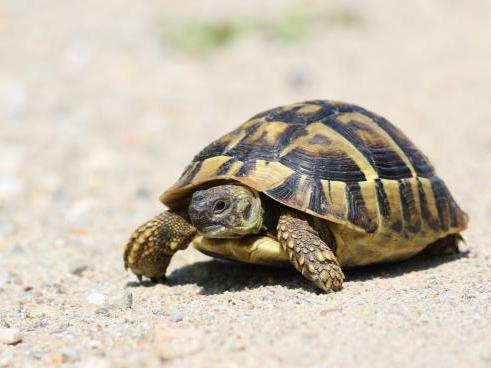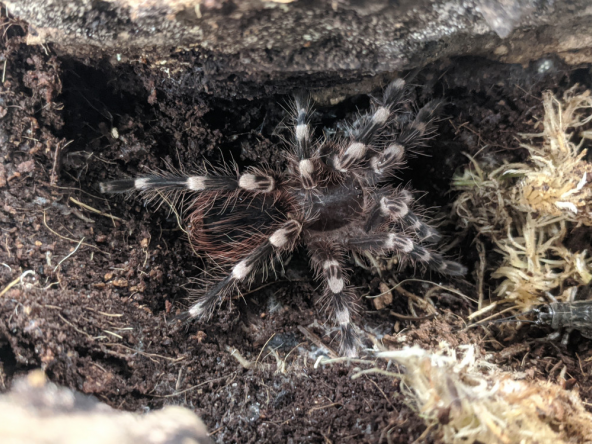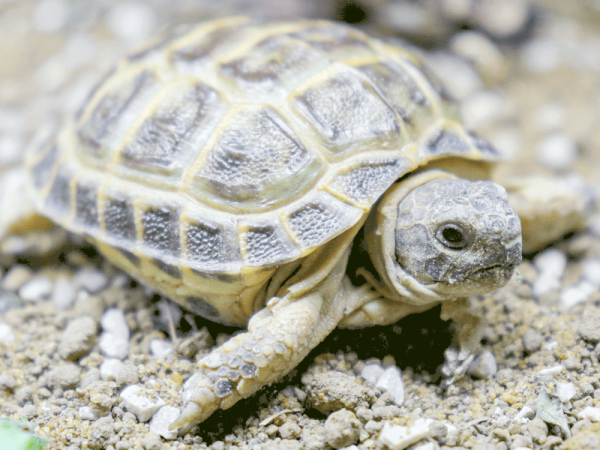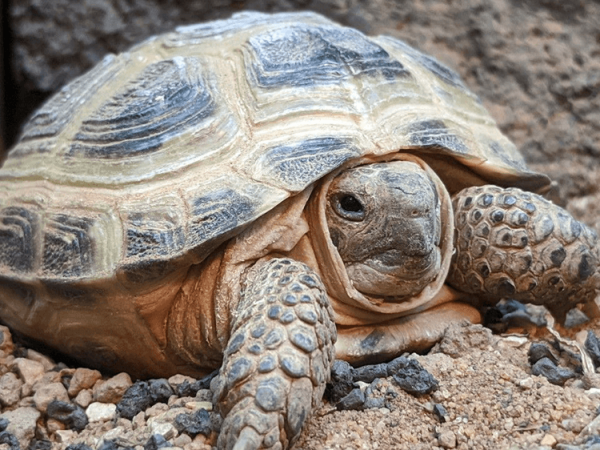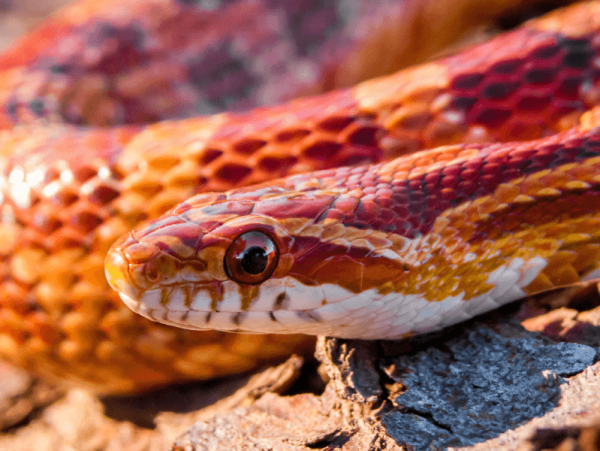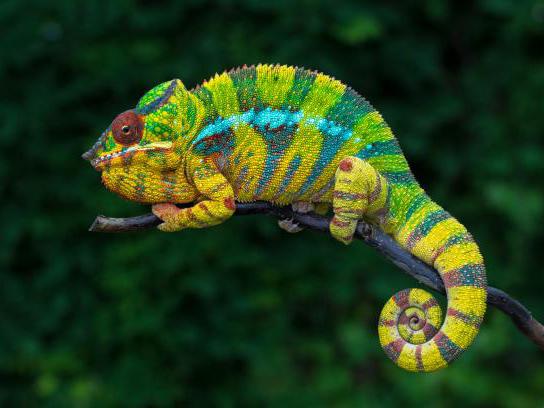Mediterranean tortoise, Testudo sp., care sheet
Mediterranean tortoise species include Hermann’s (Testudo hermanni), Spur-thighed (Testudo graeca), and Marginated (Testudo marginata). It’s always recommended that your specific species be researched for a more individual overview, however, all three of these species require a similar environment, being from similar areas.
Habitat
Mediterranean species inhabit rocky, arid regions, scrub and forests. They are all terrestrial living but are capable of climbing rocks and rough/uneven terrain as well as digging. Being herbivorous, most of their day is spent foraging for vegetation as well as basking in the sun. During colder, winter months they would enter a long period of hibernation in the wild, though as this behaviour occurs on the basis of lack of food and heat, it is not required in captivity so your pet will be awake all year round!
Enclosure
Tortoises naturally roam and forage long distances throughout their day, so it is essential that your enclosure is large enough to suit their size and activity needs. The first 10 years of your pet’s life is when most of their growth will occur but although this sounds like a long time period, preparation is key in keeping these species properly.
A garden, where your tortoise can roam and forage on grasses and weeds is also a great exercise as well as nutritional opportunity, though there needs to be consideration of the weather conditions and the time periods your tortoise is away from UV and optimum basking temperature. Tortoises shouldn't be kept outside long term, even through the summer months.
Heating and lighting
Mediterranean tortoises will require a basking temperature of around 32°C throughout the day. Heating and lighting for a table will be different from that of a vivarium but further advice is available from our Swell Reptiles and Swell Superstore staff for your specific enclosure type.
A basking D3 bulb may be used for a table, which includes heat, UVA and UVB all in one bulb. These types of bulbs cannot be thermostatically controlled though and should be attached to a bracket, leaving room for movement of the bulb and monitored with an accurate thermometer.
When the heat and UV are in separate bulbs like in a vivarium, the heat bulb would be safer thermostatically controlled to prevent overheating. Your tortoise should also always have a distinct basking area and cooler escape area, which can be mid - high 20’s.
At night it is safe for your tortoise to be kept at room temperature with no bulbs used, so long as this doesn't fall below 15 - 20°C. This drop in temperature is natural in the wild habitat of your tortoise and is relevant in creating night and day periods.
UVB, as briefly mentioned above, is also a necessity for your tortoise. Your tortoise will require a high level UVB tube or the basking D3 if in a tortoise table. This UVB is essential in metabolising key nutrients such as calcium, preventing metabolic bone disease and deterioration of shell health. UVB tubes also contain UVA which is essential in your animal’s eyesight.
Dependent on your enclosure type and the brand of the bulb, your UV will need changing every 6 - 10 months, as after this period your UV will be ineffective and not benefiting your animal.
UV should be used in a 12-hour cycle, being switched off at night to allow for a distinguishable day and night period. Tortoises are often kept away from the UV bulb too long when allowed to roam all day, this can be just as detrimental as not providing the UV and should be considered.
Water
Tortoises should have constant access to a shallow water dish in their enclosure. Remember their shape means they are unable to lift their heads too high or climb over the edge of a deep bowl. Tap water can be used in their dish and should be changed daily as they will often use this for bathing as well as drinking.
You can also offer your tortoise a bath every now and then for an extra bathing opportunity, shedding aid and re-hydration. Ensure water used for bathing is warm but not too hot. As the water cools your tortoise will lose heat.
Diet
You will be feeding your tortoise solely on vegetation, incorporating a good mix of leafy greens and garden weeds as well as some vegetables and fruit as an occasional treat. This kind of diet tends to be nutritionally richer and more natural to your tortoise than commercially available tortoise pellet.
Guides are readily available online and in books for tortoise safe vegetables, garden greens and fruit and should be researched thoroughly before anything is provided as there are a few items that could be detrimental to your tortoises health.
You will also need to supplement the diet of your tortoise with calcium and multivitamin which come in the form of powders to be dusted on top of any food provided. The Calcium will be provided 5 days in a week with the multi vitamin being provided 2 days.
Both are essential in keeping your tortoise healthy. Cuttlebone is another great way of providing calcium and even assists in keeping down the tortoises beak as it chews, providing this however doesn't mean the powder isn't needed.
Decor
Hides and other décor should be available to your tortoise. Although they cannot climb too high, they will benefit from tunnels, hills, foliage, rocks and bark pieces in terms of mental stimulation and exercise. These will also help your tortoise shed and, rocks especially will prevent extensive nail growth. Changing things around every now and then keeps your tortoise interested.
Shopping list
- Vivarium / Table
- Heat source
- Guard/Protector
- Thermostat (bulb dependent)
- UVB Lighting
- Thermometer
- Hygrometer
- Water bowl
- Substrate
- Hides
- Door lock/ wedge
- Decoration
- Calcium and Multivitamin
- Cleaning Equipment
- Cuttlebone / tortoise block
Species fact file
Name(s): Hermann’s, Spur-thighed and Marginated tortoise
Scientific name(s): Testudo hermanni, graeca and marginata
Lifespan: 80 - 100 years
Length: 7 - 14 inches (species Dependent)
Temperament: Usually Docile, timid
Origin: Countries surrounding the Mediterranean
Vivarium Size: 5ft x 3ft Minimum
Temperature gradient: 20 - 32°C
Humidity: 40 - 50%
Lighting: high-level UVB
Feeding: Vegetation




